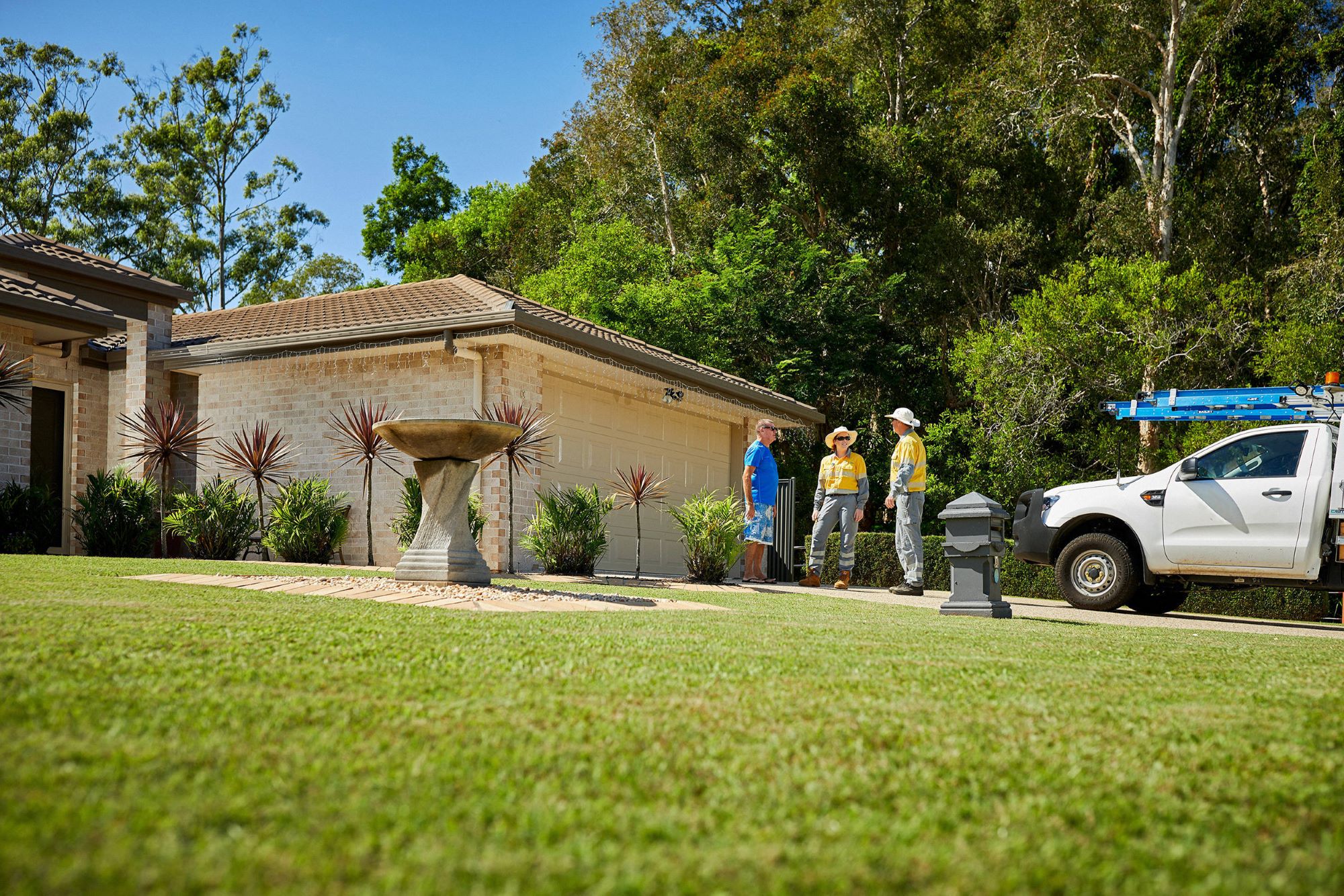Renovating & building
Renovating or building a new home is the perfect time to ensure your house is designed to save you money and energy. Energy efficient building designs may cost little or no more than standard designs, but also give you ongoing savings for years to come.
Choose wisely, build right, live well.
More and more Queensland residents are embracing sustainability into their lifestyles. Never before has it been more important to think about ways to reduce your on-going household costs and future proof the biggest investment you will ever make.
The wise choices you make today will determine how well your home copes with your local climate as well as having a significant impact on the ongoing energy and water costs of your new home.
Our booklet, Building a sustainable home (PDF 5.0 mb), shows the range of practical measures you can include in your new home to design for your local climate, include energy efficient features and appliances, include water saving features and also help with landscaping and planting.
Smart homes
There is a wave of new "smart home" technologies now available to help homeowners control energy use, manage energy bills and make home security and lifestyle improvements. Our guide, The smart energy home (PDF 1.9 mb) is an easy to read guide on how to incorporate smart home features in your home. We also have a fact sheet (PDF 402.2 kb) that explains the benefits of having an “all-electric” home, meaning that all appliances, including cooking and water heating, only use electricity.
Building Standards for sustainability
In Queensland, there are energy efficient building standards that all homes must meet. New houses and townhouses, and major renovations to existing buildings, must achieve a minimum 6-Star energy equivalence rating. New unit buildings and major renovations to units must achieve a 5-Star energy equivalence rating.
This energy equivalence rating for new dwellings is determined by the design of the building envelope or 'shell' (i.e. roof, walls, windows and floors) and energy saving features.
Software accredited under the Nationwide House Energy Rating Scheme (NatHERS) can be used to assess your home's thermal performance at design stage and determine your home's energy equivalence rating.
The more stars the more energy efficient the home, and the more you'll save on ongoing home energy costs. There are different options to meet the minimum requirements, including:
- northern orientation of living rooms
- natural ventilation through windows and doorways
- shading with wider eaves and awnings
- insulation in roof space and walls
- treated windows
- light coloured roof and walls
- ceiling fans
- well-designed outdoor living areas.
Talk to a professional
It's best to discuss energy efficiency options for your house design with your builder or architect. You can get expert design advice from professionals at Archicentre, Building Designers Association of Queensland or Association of Building Sustainability Assessors.
Talk to your local council about the latest building regulation requirements for your area or visit the Queensland Government website for more information on sustainable housing laws.
Building a Pool?
When building a pool, there are some simple steps you can take that will save you energy and money for years to come.
By considering the placement of your pool in the yard, the size and overall design, you can help reduce building and running costs as well as maintenance time.
Also talk to your electrician about what circuits and appliances you will want around your pool so that these circuits can be wired when the pool goes in. For example, you can have your pool pump connected to an Economy tariff on one circuit to save on running costs and have your lights and water features connected to a continuous supply general usage circuit so that they are available whenever you want them.
By connecting to an Economy tariff, you will help reduce peak demand on the network during peak times (around 4pm-8pm). Your pump will be powered at the discretion of your electricity distributor, usually outside the peak times.
Energy efficient pool pumps can also help you save on pool running costs.
The biggest cost of running your pool is filtration and sanitation to keep your pool water healthy and clean. Filtration and sanitation involves using a pump to circulate pool water. The amount of filtration your pool needs can be influenced by many factors, so it's important to consider the pros and cons of each.
The table below outlines the factors that influence a pool's filtration needs and weighs up the advantages and disadvantages of these considerations.
| Considerations | Positive | Negative |
|---|---|---|
| Pool size |
|
|
| Shading your pool |
|
|
| A pool with plenty of cross breezes |
|
|
| Piping |
|
|
| Water heating/cooling |
|
|
| Pump type |
|
|
| Pool blanket |
|
|
| Tariff type |
|
|
Talk to a professional
It's best to speak to someone at your local pool shop for advice on the best type of pool for your home: concrete (inground) or vinyl-lined/fibre glass (inground/above ground). Each has its own unique properties with regards to chemical use and potentially more use of your pool pump to keep your pool water healthy. Visit the Swimming Pool and Spa Association (SPASA) for further advice.

